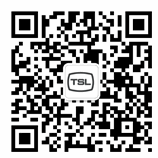EXPLORE THE HUB: Hot Topcis and Deep Dives | Ebooks and Technical Application | Case Studies
TECH INSIGHTS - SIT DOWN: TSL PRODUCTS' MARK DAVIES ON EXPECTATIONS AND THE OUTLOOK FOR REMOTE PRODUCTION
What are the main considerations and developments that TSL is focusing on for Remote Production and Sports?
In recent years, TSL has demonstrated how its range of solutions can help to reduce the complexity of transitioning to an IP-based workflow, focusing on bringing added value to the PAM-IP audio monitors and Advanced Broadcast Control Systems in particular.
In response to the industry’s adoption of ST-2110, TSL Products’ PAM1-IP and PAM2-IP audio monitoring products now support ST-2110, allowing ST-2110 video and audio streams to be monitored for those customers deploying essence-based IP infrastructures.
We also have new developments and the addition of peripheral devices to our control offering, including research into IP Device Routing, to create a simple and intuitive interface that translates IP workflows to retain the familiarity of SDI routing and provides signal control and routes edge devices in ST-2110 networks.
New, powerful tools for remote production also opens up applications for channel delegation, adding security controls and protecting devices, which can all be delivered by using a system built on independent device protocol translation and intuitive interfaces that add flexibility and efficiency to operations.
Partnering this with a screen-based display system that can interface with any of the extensive range of attached third-party equipment, provides results and eases production via sophisticated command, control and display systems that are limited in scope only by imagination.
How can an Advanced Broadcast Control System help sports broadcasters?
By using systems that are built to be independent, universal, configurable and infinitely scalable, broadcasters can achieve interoperability between equipment regardless of manufacturers and format specifications.
With traditional control infrastructures, sports broadcast operators spend tens of seconds taking multiple steps to secure a certain shot of the crowd in the stadium, or the field of play. After an operator picks a shot, they would then need to zero in on that location, fade up the microphones on their audio console, route the footage back into their multi-viewer and then route that signal for broadcast. TallyMan, for example, can repackage these steps into pre-defined commands long before the game begins, automating multi-step processes into single functions and capturing the action in a matter of milliseconds.
How do you see remote production progressing over the next twelve months?
The continuing pressure on production budgets will accelerate the deployment of remote production solutions. From a control perspective, this is a maturing technology with many deployments for a requirement such as remote news production. For news, especially in scenarios where it is lower cost or just safer to have engineering and production staff remote from the news studio, this is an attractive solution. However, in sport, where saving the cost of sending out an OB is attractive, there are some reports that not having the production crew among the excitement of the event is detected by the viewer at home. More work to do in this area, some by engineers, possibly some by psychologists!
Has the take up of IP technology been as you expected – and how do you see this area of operations developing?
For us, meeting the needs of our customers remains paramount, which is why we always work hand-in-hand with them to design and deliver solutions that not only meet their immediate requirements, but also fit their ongoing needs. With the industry transition to IP gaining momentum, we continue to design products and solutions that support both traditional SDI and IP infrastructures and workflows. In accordance with this trend, our products are built on a flexible and open approach, demonstrating how our solutions can aid in the IP transition, whilst at the same time lending its knowledge and expertise on the IP transition in general.
Any future plans you can discuss?
In the IP-connected world, the ability to hide the complexity from the operators will be key to success. This plays to the strengths of the TSL Products range of solutions. Combining our deep understanding of controlling third-party equipment with our TallyMan Advanced Control Platform and our audio and video monitoring solutions, we are well-positioned to provide complete solutions with our own products but will also easily integrate with third-party kit. With a view to this connected IP future, we have already added advanced control protocols to many of our products, including Ember+, SNMP & API, with AMWA NMOS IS04 to follow. We will continue to track the AIMS roadmap and keep our products up to date with the emerging IP workflows.
Do you have a sports related case study that you can share?
TSL Products’ PAM2-IP audio monitoring unit was utilised earlier this year to assist CCTV with its coverage of the Winter Games in Pyeongchang, South Korea. CCTV installed the PAM2-IP at its Beijing headquarters to better monitor the facility’s IP and 4K-based master control and live production infrastructure. The PAM2-IP was selected to provide audio and video signal monitoring within the central control room, as well as for use by the field team, who will be using the unit to support remote IP transmission.
On the control side, TallyMan was deployed during a recent professional auto-racing series to circumvent conflicting commands from the production’s camera operators. If an operator saw a crash or particularly strong performance, the camera includes a “pick me” button, which routed the camera feed on to a specific spot on the multi-viewer to indicate a “suggested shot”. However, since a producer must choose whether to take that shot, there is a delay before the feed goes live to air. Conversely, unrestricted control could lead to multiple live cuts within milliseconds. TallyMan offered the broadcaster a powerful decision-making engine. Instead of routing operators’ “pick me” triggers to the router or the multi-viewer, it is first fed through TallyMan. The system sends the first camera operator live to air and locks out all other cameras for four seconds, while still allowing the producer to kill that functionality, if they choose. The process happens in less than half a second.


